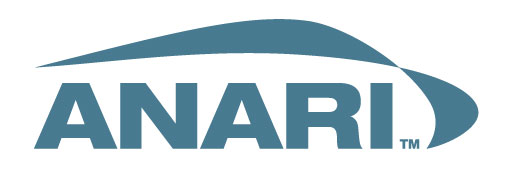Khronos to Develop ‘ANARI’ Analytic Rendering Interface API Standard
Exploratory Group becomes full Working Group to develop standard for data visualization; Open call for industry participation
Beaverton, OR – March 3, 2020 – 6:00 AM PT –Today, The Khronos® Group, an open consortium of industry-leading companies creating advanced interoperability standards, announces that its Analytic Rendering Exploratory Group has received strong industry support and is transitioning to a full Working Group to create an analytic rendering interface API for data visualization. This new API will be called ‘ANARI’. Any interested company is invited to join Khronos and participate in the ANARI™ Working Group under the consortium’s multi-company governance process to have a voice and a vote in the creation of this open, royalty-free standard. This initiative is expected to be of particular interest to any company creating scientific visualization rendering engines, libraries and applications.
“We are excited to launch the ANARI Working Group and begin creating a standard to foster significant data visualization innovation while streamlining development efforts for the industry,” said Peter Messmer, ANARI working group chair and senior manager of HPC Visualization at NVIDIA. “ANARI will free visualization software developers from non-trivial rendering details while enabling graphics experts and hardware vendors to avoid domain-specific functionality and optimizations in their rendering backends.”
Recent advances in rendering technology for image generation–especially the introduction of real-time ray tracing–significantly advance data visualization and aid in interpretation of complex data. However, analytic rendering can lead to increased development costs and complexity that drives project time. Graphics standards such as The Khronos Group’s Vulkan®, a graphics and compute API and its much-anticipated upcoming ray tracing extension, could provide powerful rendering hardware abstractions, but they are still too time-consuming for many visualization applications to utilize.
To remedy this, Khronos announced in November 2019 the creation of the Analytic Rendering Exploratory Group, with the intent to investigate industry interest in creating an open API for data visualization. Now, driven by intense industry support, Khronos has created the ANARI Working Group to begin work on creating an open, higher-level analytics rendering interface API that will simplify the development of visualization applications while leveraging the full potential of modern rendering capabilities. Such a standard will make advanced rendering techniques more accessible and widely used, while also reducing software development costs.
The following companies have participated in and supported the Analytic Rendering Exploratory Group resulting in the launch of the ANARI initiative: AMD, Argonne National Laboratory, Autodesk, The Boeing Company, delta-h, D/VisionLab, Intel, Kitware, NVIDIA, Oak Ridge National Laboratory, SURVICE Engineering, Tecplot, Inc., Texas Advanced Computing Center.
If an organization is interested in becoming a Khronos member, please visit our Member page or contact Membership Services.
Industry Support for ANARI
“There are a multitude of rendering solutions. Standardizing on an API allows scientific rendering to be more streamlined. AMD is committed to this approach as it is directly in line with our ‘GPUOpen’ philosophy for open source solutions and CPU and GPU multi-platform support,” said Brian Savery, Radeon™ ProRender Software Lead at AMD.
“Being committed to a standard frees up resources for implementers to concentrate on their unique value in the market and not get too caught up in the ever-growing list of integration efforts necessary to enable end users. ANARI will benefit both sides of the API greatly,” said Jefferson Amstutz, lead engineer on the OSPRay rendering library at Intel.
“Our recent experience integrating Intel OSPRay and NVIDIA OptiX rendering into VTK demonstrates that cooperation over rendering interfaces can help bring advanced rendering features and best-of-class performance into visualization applications while minimizing development costs,” said David DeMarle a principal engineer at Kitware. “We expect that wide adoption of a cross-vendor open standard will accelerate the development of new features and innovation.”
“The ANARI API could be a huge productivity booster for us, simply by reducing our development and maintenance costs quite significantly and by providing instantaneous portability across multiple hardware platforms,” said Christiaan Gribble, Director of High Performance Computing within the Applied Technology Operation at SURVICE Engineering.
“We are excited about a standard interface around scientific rendering as low-level interfaces require significant overhead in development time,” said John T. Goetz, PhD, senior software development engineer, Tecplot, Inc. “The ANARI standard will allow us to focus on novel scientific visualizations and bring these to market faster than ever before.”
“Having an open and unified interface for analytic rendering would enable us to simplify support for hardware-accelerated analysis across our advanced computing systems,” said Paul Navrátil, Ph.D., Director of Visualization at the Texas Advanced Computing Center. “ANARI promises to enable the investigators that we support to focus on extracting insights from their data with powerful rendering capabilities rather than dealing with system architectural details. These capabilities become even more important as we move into exascale systems, where the data analysis will often be done in situ with the simulation on the same computing hardware.”
“The development of an open rendering interface standard specialized for the unique needs of technical and scientific visualization will enable software tools to exploit state-of-the-art renderers using rasterization and ray tracing to perform interactive, in-situ, and post-hoc visualization on hardware platforms ranging from PCs to the largest parallel computers in the world,” said John Stone, senior research programmer at University of Illinois. “By raising the level of abstraction and providing a standard interface, ANARI will enable visualization software developers to rapidly deploy cutting-edge hardware-optimized renderers and rendering technologies in their tools, relying on an ecosystem of robust standard-conforming implementations.”


